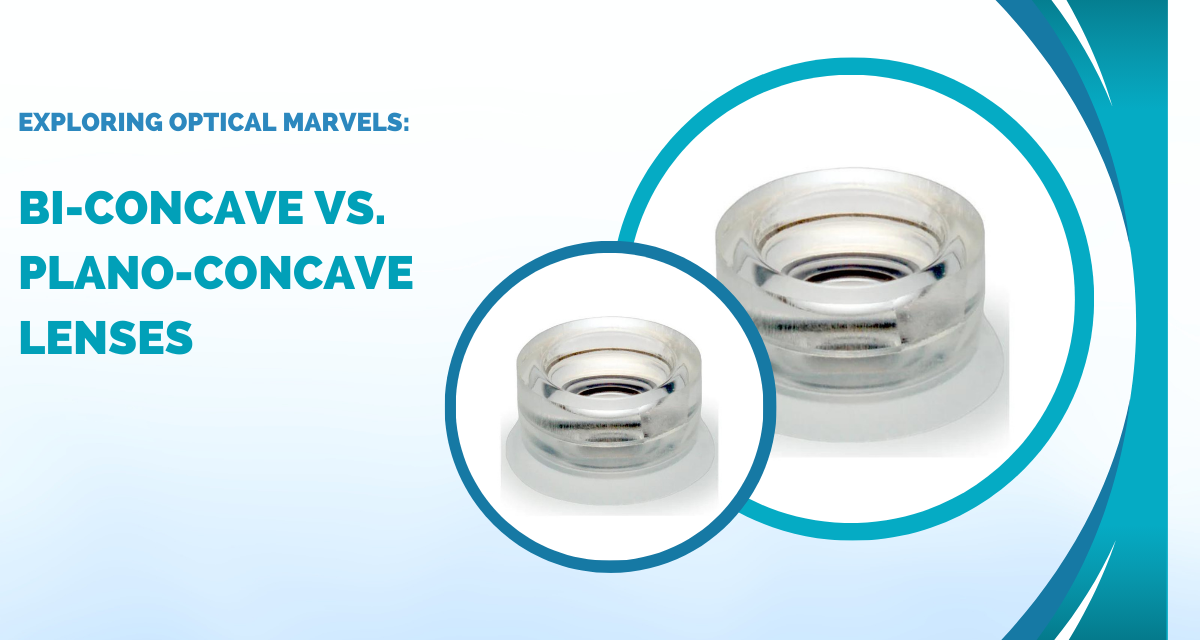
Exploring Optical Marvels: Bi-Concave vs. Plano-Concave Lenses
In the world of optics, lenses play a pivotal role, each designed with distinct characteristics catering to diverse applications. Among these, the Bi-Concave and Plano-Concave lenses stand out, both possessing unique attributes that render them indispensable in various optical systems.
Understanding the Basics: Bi-Concave vs. Plano-Concave Lenses
Bi-Concave Lenses:
Bi-Concave lenses feature two curved inward surfaces, causing light rays passing through them to diverge. This divergence is intrinsic to their negative focal length, making them a valuable asset in situations requiring beam expansion or image reduction.
Plano-Concave Lenses:
Conversely, Plano-Concave lenses sport a flat surface on one side and a curved concave surface on the other. These lenses also possess a negative focal length, but their applications often differ due to their unique design.
Diving into Differences: Bi-Concave vs. Plano-Concave Lenses
Design Distinctions:
The primary difference lies in their design – while Bi-Concave lenses have two concave surfaces, Plano-Concave lenses combine a flat and a concave surface. This design variation leads to differing optical behaviors and applications.
Focal Length Characteristics:
Both lenses exhibit negative focal lengths, but the manner in which they achieve this varies due to their distinct shapes. Bi-Concave lenses, with their symmetrical curvature, diverge light more uniformly, whereas Plano-Concave lenses disperse light differently owing to their asymmetrical design.
Applications and Use Cases:
Bi-Concave lenses find their niche in applications demanding divergence of light, such as beam expanders and projection systems. On the other hand, Plano-Concave lenses are often preferred in situations where a defined focal point is required, like in optical systems or telescopes.
Optical Performance:
The unique shape of Bi-Concave lenses ensures even light distribution, but they may introduce spherical aberrations. Plano-Concave lenses, with their combination of flat and curved surfaces, offer better control over aberrations, ensuring clearer imaging in certain scenarios.
Choosing the Right Lens for the Job
Selecting between these lenses hinges on the specific requirements of the optical system. Bi-Concave lenses excel in applications necessitating divergence or image manipulation, while Plano-Concave lenses are favored when controlled divergence or precise focal points are vital.
Conclusion
In conclusion, both Bi-Concave and Plano-Concave lenses bring distinct advantages to the realm of optics. Their differences in design, focal length, and optical performance cater to a wide array of applications, offering engineers and scientists versatile tools to manipulate light effectively.
Understanding these nuances empowers professionals to make informed choices when integrating these lenses into diverse optical setups, ensuring optimal performance and desired outcomes.
Explore the possibilities with Bi-Concave and Plano-Concave lenses – two remarkable optical wonders that shape the way we perceive and manipulate light in today’s world.


